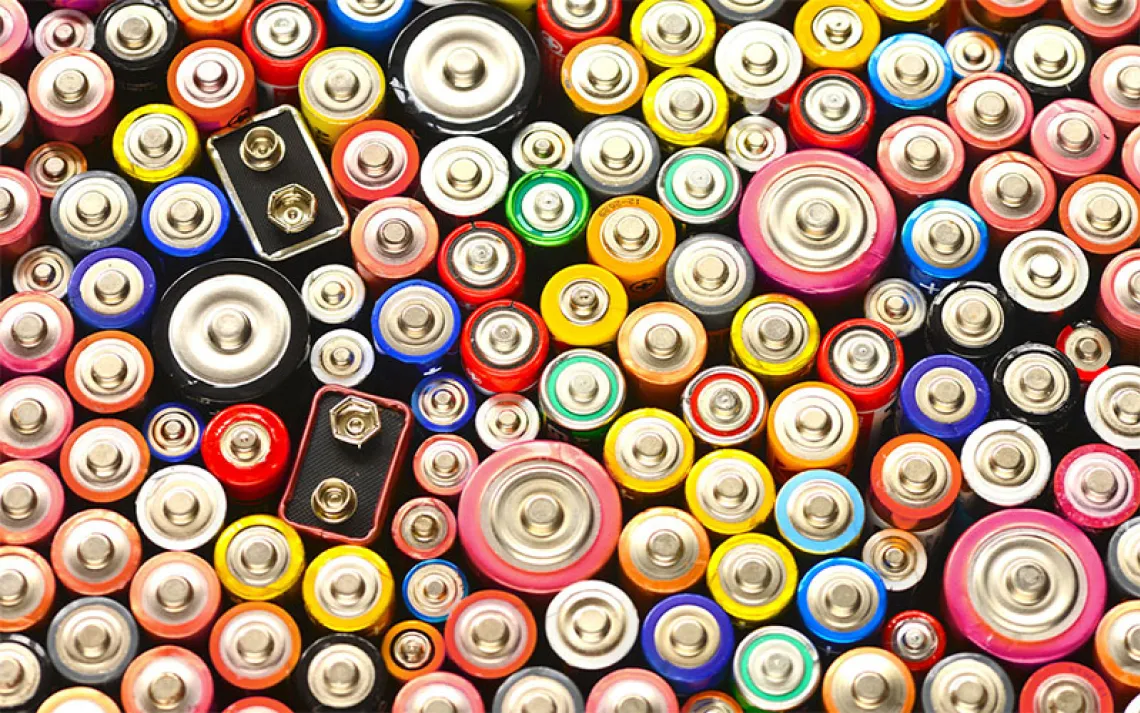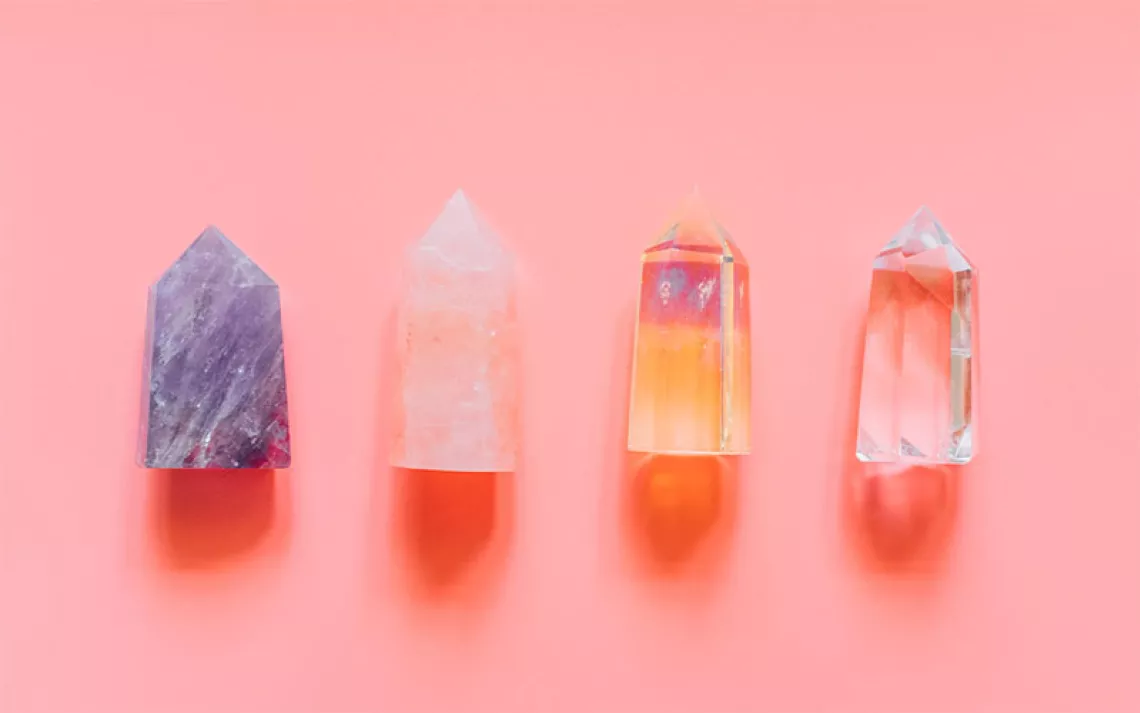A Guilt-Free Day on the Slopes
One adventurous family’s guide to the latest in ecofriendly snowboarding gear
Winter gear earned a bad rep in the early 2000s. Scientists discovered that the perfluorocarbon chemicals (PFCs) present in synthetic waterproofing materials were not only linked to cancer and infertility, but could also take more than four years to flush out of winter-coat-wearers’ tissues. What’s more, PFCs’ persistent residues pose a grave threat to our waterways.
Luckily, many among today’s outdoor adventure brands have worked hard to develop waterproof alternatives and to establish better manufacturing practices. Textile manufacturers are increasingly working to reduce their carbon footprints and hazardous waste output and adhering to the standards designated by Bluesign—a certifying body that rates materials on their resource productivity, consumer safety, water emissions, air emissions, and occupational health and safety factors. Just last month, snowboard manufacturer/outdoor adventure outfitter Burton announced goals for 2020, which include manufacturing all soft goods from 100-percent-Bluesign-approved materials, 100-percent-sustainable cotton, 50-percent-recycled polyester, and 100-percent-PFC-free materials; diverting 75 percent of its waste from landfills; and reducing its carbon footprint by 20 percent. For an avid snowboarder and mother of four slopes-loving adventurers, the forward momentum has been buoying. Here’s a snapshot of some of my family’s go-to eco-gear for winter.
Boards and Bindings
 Mervin Manufacturing labels all its Lib Tech, Gnu, and Roxy boards (for surf, snow, and skate, respectively) with a loud neon green sticker that reads, in all caps, “The World’s Most Environmental Board Factory Built With Wind and Water Generated Power in Washington State, USA, Zero Hazardous Waste.” Mervin uses vegetable-oil-based plastics, renewable wood, low-VOC (volatile organic compound) resin systems, and no solvents, plus recycled, FDA-approved sidewalls. And its water-based sublimation system keeps thousands of pounds of plastic off cuts (the parts that get trimmed during production) out of landfills each year. This is because the cuts from Mervin’s manufacturing process, along with wood scraps, can be recycled. Best of all, all Mervin boards are hand-built by snowboarders, skateboarders, and surfers. Female snowboarder Barrett Christy, a member of the first U.S. snowboarding team during the 1998 Winter Olympics (and currently a member of Mervin's product design and marketing team), personally selected the GNU Zoid directional asym board ($600) for my specific riding experience and style.
Mervin Manufacturing labels all its Lib Tech, Gnu, and Roxy boards (for surf, snow, and skate, respectively) with a loud neon green sticker that reads, in all caps, “The World’s Most Environmental Board Factory Built With Wind and Water Generated Power in Washington State, USA, Zero Hazardous Waste.” Mervin uses vegetable-oil-based plastics, renewable wood, low-VOC (volatile organic compound) resin systems, and no solvents, plus recycled, FDA-approved sidewalls. And its water-based sublimation system keeps thousands of pounds of plastic off cuts (the parts that get trimmed during production) out of landfills each year. This is because the cuts from Mervin’s manufacturing process, along with wood scraps, can be recycled. Best of all, all Mervin boards are hand-built by snowboarders, skateboarders, and surfers. Female snowboarder Barrett Christy, a member of the first U.S. snowboarding team during the 1998 Winter Olympics (and currently a member of Mervin's product design and marketing team), personally selected the GNU Zoid directional asym board ($600) for my specific riding experience and style.
At Blue Mountain Resort, which is home to Pennsylvania's highest vertical, the Zoid cut through corduroy, powder, and even chunder like butter (learn more about the nuances of adventure snow terminology here). The board’s Magne-traction, which offers steak-knife-like serrated edges, crushed ice to powder, too. No matter how recklessly I went into a turn, I never washed out. Asymmetry on the board’s horizontal and vertical axis means the toe-side edge is longer than the heel-side, a unique feature that enabled me to execute some sick carves—I could even graze my cheek against the surface of the snow.
 My husband, Thomas, prefers the Backwoods splitboard ($600) from Weston Snowboards for its maneuverability on fresh powder. A wide nose and narrow tail keeps you afloat and able to nimbly navigate through trees. Weston is another U.S.-based snowboard manufacturer dedicated to protecting the environment. Just this month, the company, along with the National Forest Foundation and other outdoor brands, launched the Freedom of the Forest campaign to raise funding for the U.S. Forest Service. To avoid toxins, Weston uses sintered sidewalls—which stabilize skis or boards, lending more “pop out” of turns and the ability to handle impacts on rails or boxes—rather than traditional ABS sidewalls. Weston Snowboards co-owner Mason Davey reports that the company does not use any VOCs in its epoxy (glue) and adds, “We may be the only company utilizing UV inks and clear coats via direct digital printing.” Weston boards’ core is made from sustainably farmed poplar and bamboo, and much of the board is made from recycled materials.
My husband, Thomas, prefers the Backwoods splitboard ($600) from Weston Snowboards for its maneuverability on fresh powder. A wide nose and narrow tail keeps you afloat and able to nimbly navigate through trees. Weston is another U.S.-based snowboard manufacturer dedicated to protecting the environment. Just this month, the company, along with the National Forest Foundation and other outdoor brands, launched the Freedom of the Forest campaign to raise funding for the U.S. Forest Service. To avoid toxins, Weston uses sintered sidewalls—which stabilize skis or boards, lending more “pop out” of turns and the ability to handle impacts on rails or boxes—rather than traditional ABS sidewalls. Weston Snowboards co-owner Mason Davey reports that the company does not use any VOCs in its epoxy (glue) and adds, “We may be the only company utilizing UV inks and clear coats via direct digital printing.” Weston boards’ core is made from sustainably farmed poplar and bamboo, and much of the board is made from recycled materials.
Wax
Waxing the base of your board or ski protects it from drying out and makes you go faster. After learning that most wax contains harmful toxins—it’s typically rife with PFCs, petrochemicals, and fluorocarbons, which can get into our bloodstream and seeps into waterways—my family started waxing our boards with more ecofriendly wax from BeaverWax (starts at $33 for a pack of three) or Purl (starts at $10). BeaverWax is hand-poured in Vancouver, British Columbia, and founder Matt Turner reports that the company is working with a new technology that stabilizes organically produced oils by removing the oxygen and recombining the molecules. “This electro-chemical process is designed to minimize environmental impact while creating products superior to those derived from petroleum,” he says. Purl wax is made with no fluorocarbons, nor toxic chemicals, and its Team Riders like to melt the blue wax along boards’ edges and purple down the middle. (That’s what they did before winning last year’s Boardercross Nationals.)
Jackets
 Thomas rides with Patagonia’s most breathable and stretchable waterproof hardshell, the Descensionist Jacket ($450). He likes to layer it atop his current favorite shirt, the Kennicott Shirt Jac ($97) from Toad&Co. Made from reclaimed Italian wool and blended with polyester and nylon, it feels like cozy pajamas against the skin but looks dressy enough for date night. A scientist, Thomas stays abreast of Toad&Co’s social and environmental resources and follows Patagonia’s research progress via The Footprint Chronicles and its Cleanest Line blog. Patagonia recently reported that it has “switched from a C8 fluorocarbon-based treatment to a shorter-chain C6 treatment, also fluorocarbon-based, but with byproducts that break down faster in the environment and with less potential toxicity over time to humans, wildlife, and fish.”
Thomas rides with Patagonia’s most breathable and stretchable waterproof hardshell, the Descensionist Jacket ($450). He likes to layer it atop his current favorite shirt, the Kennicott Shirt Jac ($97) from Toad&Co. Made from reclaimed Italian wool and blended with polyester and nylon, it feels like cozy pajamas against the skin but looks dressy enough for date night. A scientist, Thomas stays abreast of Toad&Co’s social and environmental resources and follows Patagonia’s research progress via The Footprint Chronicles and its Cleanest Line blog. Patagonia recently reported that it has “switched from a C8 fluorocarbon-based treatment to a shorter-chain C6 treatment, also fluorocarbon-based, but with byproducts that break down faster in the environment and with less potential toxicity over time to humans, wildlife, and fish.”
When I spoke at the Kendal Mountain Film Festival in England a few months ago, attendees had the opportunity to test Columbia’s new Outdry Ex Eco Down Jacket ($280). It’s the first waterproof jacket that features the tough, breathable membrane outside rather than inside. This solves the problem of wet-out, which is when your traditionally treated outer layer loses its water repellency due to abrasions or wear and tear, and the jacket loses its breathability and ability to transmit water vapor. And if a jacket won’t wick away your sweat, you’re going to end up feeling clammy. I’m thrilled that this jacket solves the problem of getting caught in the rain with a down jacket (they typically end up saturated). Its down is responsibly sourced, and it’s dye-free, which saves more than 24 gallons of water per jacket. Plus, each jacket is made from 27 upcycled plastic bottles and 100-percent-recycled fabric and trims.
 I like to ride, however, with my warmest and driest jacket: Burton’s Gore‑Tex Flare Down Jacket ($690). Not only is it Bluesign-approved, but it’s also mapped with 90/10 Ultra-Premium 800 down fill and buttery-soft, down-proof ripstop lining. My favorite features are its wind gasket cuffs and neck gasket.
I like to ride, however, with my warmest and driest jacket: Burton’s Gore‑Tex Flare Down Jacket ($690). Not only is it Bluesign-approved, but it’s also mapped with 90/10 Ultra-Premium 800 down fill and buttery-soft, down-proof ripstop lining. My favorite features are its wind gasket cuffs and neck gasket.
Hat, Socks, and Toys
A product of its eco-centric Backyard Project, The North Face’s Cali Wool Beanie ($45) is made from sheep raised according to carbon farming practices. James Rogers, the Senior Sustainability Manager of The North Face, explains, “Through activities at the ranching stage of production, carbon is drawn down into the soil, and we expect to offset the equivalent emissions of 850 cars each year, just for that ranch."
Farm To Feet ($12–$38) knits socks for hiking, running, snow sports, and other adventures for men, women, and children. The company grows and shears its own merino wool, then processes it all into yarn from within its U.S.-based factory. We all appreciate the socks’ extra reinforcements and their natural resistance to odors and bacteria. In fact, we’ve been able to pass them down from kid to kid, without worrying about holes. The Cottonwood features a 3D Active Knit Technology in the shin, which manages sweat during climbs. The kids’ Boulder-NFZ repels mosquitoes and ticks. My personal favorite sock variety, however, is the Damascus, because it boasts top-of-foot cushioning.
 For a family-friendly apres-ski activity, our kids recommend the first board game made from 100-percent-recycled fishing nets. Bureo, a company that crafts skateboards out of recycled nets, has collaborated with Jenga to create Jenga Ocean ($50), which helps to teach kids what they can do to prevent plastic pollution in the ocean.
For a family-friendly apres-ski activity, our kids recommend the first board game made from 100-percent-recycled fishing nets. Bureo, a company that crafts skateboards out of recycled nets, has collaborated with Jenga to create Jenga Ocean ($50), which helps to teach kids what they can do to prevent plastic pollution in the ocean.
Thomas Oh contributed to the reporting of this article.
 The Magazine of The Sierra Club
The Magazine of The Sierra Club




